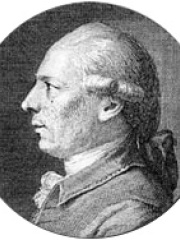

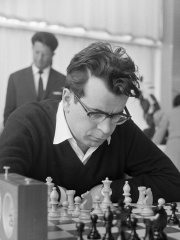
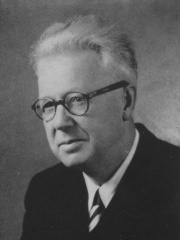
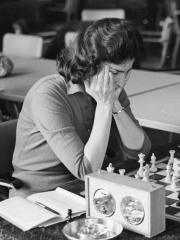
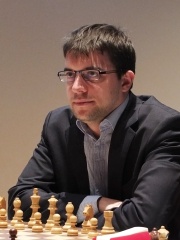
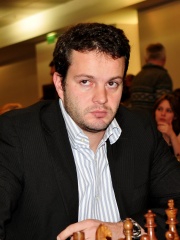
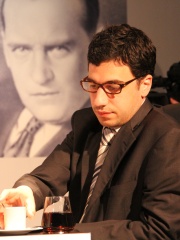
The Most Famous
CHESS PLAYERS from France
This page contains a list of the greatest French Chess Players. The pantheon dataset contains 461 Chess Players, 10 of which were born in France. This makes France the birth place of the 15th most number of Chess Players behind Serbia, and Belarus.
Top 10
The following people are considered by Pantheon to be the top 10 most legendary French Chess Players of all time. This list of famous French Chess Players is sorted by HPI (Historical Popularity Index), a metric that aggregates information on a biography's online popularity. Visit the rankings page to view the entire list of French Chess Players.

1. François-André Danican Philidor (1726 - 1795)
With an HPI of 72.01, François-André Danican Philidor is the most famous French Chess Player. His biography has been translated into 46 different languages on wikipedia.
François-André Danican Philidor (7 September 1726 – 31 August 1795), often referred to as André Danican Philidor during his lifetime, was a French composer and chess master. He contributed to the early development of the opéra comique. He is widely regarded as the best chess player of his age; his book Analyse du jeu des Échecs was considered a standard chess manual for at least a century. A chess opening, an endgame position, and a checkmate method are all named after him.

2. Legall de Kermeur (1702 - 1792)
With an HPI of 62.44, Legall de Kermeur is the 2nd most famous French Chess Player. His biography has been translated into 23 different languages.
François Antoine de Legall de Kermeur (1702–1792) was a French chess player, and was possibly the world's best player from about 1730 to 1755. His name is variously written Kermur, Sire de Legalle, by Twiss, and Kermur and Kermuy, Sire de Legal, by others. In the List of Subscribers to Philidor's second edition it stands as in Twiss, but the spelling was, probably, in both cases Philidor's own. Along with other famous players, he played in Paris's Café de la Régence, and is considered to have been possibly the strongest player in the world around the 1730s. He taught chess to François-André Philidor. The following portrayal of Legall is given in the London Magazine, May 1825, in an article titled "Chess and Chess Players by an ancient Amateur": I am probably, without any exception, the oldest chess-player in Europe. I have not only had the honour of contending "on the checquer'd field" with M. Philidor, but I have frequently played at the Cafe de la Regence with M. de Legalle, the master of that distinguished Professor, who, in my younger days, was a better player than his celebrated pupil. There is no man of whose person and deportment I retain a more vivid recollection than M. de Legalle; he was a thin, pale old gentleman, who had sat in the same seat at the Cafe, and worn the same green coat for a great number of years when I first visited Paris. While he played at chess, he took snuffs in such profusion that his chitterling frill was literally saturated with stray particles of the powder, and he was, moreover, in the habit of enlivening the company during the progress of the game, by a variety of remarks, which every body admired for their brilliancy, and which struck me perhaps the more forcibly, as I was at that time but indifferently acquainted with the French tongue. In the book The life of Philidor, the following considerations, which can give us an idea about de Legall's strength at the chessboard are reported: M. de Kermur, Sire de Legal, at that time about forty years old, reigned supreme in that famous Cafe, and was undoubtedly a player of extraordinary strength; for Philidor alone was ever able to beat him, and that, too, not until he had developed his entire force by playing with Sir Abraham Janssen and the Syrian Stamma(*). The "first player of the band" found it necessary to accept the Rook from M. de Legal; and it took full three years to work his way up, through the various degrees of odds, to the honour of confronting his master, on even terms, as a "first-rate". (*) Fetis says that old chess-players at the Cafe de la Regence had repeated to him Philidor's own statement, that he did not attain his full strength until he had made his campaigns in Holland and in England. Thus, Legal was probably the strongest player of the Café de la Régence and probably in the world until 1755 when he lost a match to Philidor. It is not known if he traveled or played in other countries besides France, but since the Café de la Régence was the chess Mecca of the time, most of the strongest players of the 18th century, sooner or later, ended up at the Café and the strongest among them played Legal. It is known that he played with Sir Abraham Janssen, the strongest English player according to Philidor himself. G. Allen refers that Legal was of the same opinion of Philidor regarding the skills of Janssen over the board. This could indicate that, at even terms, Janssen won approximately only one fourth of the games played with Legal as he did with Philidor, but this is not completely clear from Allen's text if this interpretation is correct. The chess encounter between Legal and Janssen happened, according to aforementioned author, after the match between Philidor and Janssen and, thus, must be collocated after 1747. It is also very likely, as also suggested by Allen, that Legall played Stamma, since the latter lived for a certain period in Paris where he published the Essai sur le jeu des echecs in 1737. If this is correct, Legal would have played Stamma before Philidor began to attend the Café de la Régence. Legal lived to nearly ninety years old. After his defeat with Philidor in the match of 1755 and up to the time of his death, however, he maintained his rank as the second player of France. Thus, it is also highly probable that he played, with an overall favourable outcome, against the disciples of Philidor of the Société des Amateurs (Bernard, Carlier, Leger and Verdoni). Legall is the eponym of Legall's mate, a mating pattern found in his only extant game, Legall–Saint Brie, Paris, 1750.

3. Pal Benko (1928 - 2019)
With an HPI of 60.30, Pal Benko is the 3rd most famous French Chess Player. His biography has been translated into 28 different languages.
Pal Charles Benko (Hungarian: Benkő Pál; July 15, 1928 – August 25, 2019) was a Hungarian and American chess grandmaster, author, and composer of endgame studies and chess problems.

4. André Chéron (1895 - 1980)
With an HPI of 58.12, André Chéron is the 4th most famous French Chess Player. His biography has been translated into 15 different languages.
André Chéron (September 25, 1895 – September 12, 1980) was a French chess player, endgame theorist, and a composer of endgame studies. He was named a FIDE International Master of Chess Composition in 1959, the first year the title was awarded. Chéron was the French champion three times (1926, 1927, and 1929) and played on the French team at the 1927 Chess Olympiad. He is best known for his work in the theory of endgames, where he was most concerned with detailed proofs about theoretical endgame results. He composed hundreds of endgame studies. His life's work is the monumental four-volume Lehr- und Handbuch der Endspiele (the German title), which was first published in French in 1952 and published in German in 1952–58 (and a second revised edition in 1962–70). It studies basic endgames and endgame studies, with material drawn from many sources including his own contributions. He also wrote Traité complet d'échecs and an updated version Nouveau traité complet d'échecs, half of which was about the endgame. He lived in Switzerland for many years.

5. Pierre Charles Fournier de Saint-Amant (1800 - 1872)
With an HPI of 56.80, Pierre Charles Fournier de Saint-Amant is the 5th most famous French Chess Player. His biography has been translated into 20 different languages.
Pierre Charles Fournier de Saint-Amant (12 September 1800, Monflanquin – 29 October 1872) was a leading French chess master and an editor of the chess periodical Le Palamède. He is best known for losing a match against Howard Staunton in 1843 that is often considered to have been an unofficial match for the World Chess Championship.

6. Chantal Chaudé de Silans (1919 - 2001)
With an HPI of 55.99, Chantal Chaudé de Silans is the 6th most famous French Chess Player. Her biography has been translated into 17 different languages.
Chantal Chaudé de Silans (9 March 1919, Versailles – 6 September 2001, Grasse) was a French chess player and Woman International Master. She also participated in the Men's/Open competitions. She learned how to play the game when she was nine along with her brother the Baron de Silans, who later became a strong amateur. In 1932, at age thirteen, she entered her first women's French Chess Championship. In 1936, she won the championship at age seventeen. In 1939, she married Bernard Chaudé and followed him to Morocco due to World War II. They returned to France in 1942 and soon entered French Resistance nets. In 1950 she took part to The Gijón International Chess Tournament, she scored 3,5 points. Silans represented France at the Moscow tournament, which had to decide who would succeed Vera Menchik as the woman World Champion. Chantal Chaudé de Silans was leading the field for a good part of the tournament but tired at the end, ending up being tied for fifth place out of sixteen players. Despite having to take care of four children, she participated again to the Women's World Championships in 1952 and 1955 (Moscow), and again in 1961 (at Vrnjacka Banja), ending up respectively tied for eighth place, tied for 10th and in 12th place. She was part of the national French team at the 9th Chess Olympiad held in Dubrovnik in 1950, becoming the first woman ever to participate in this competition. She was also the first woman to ever take part to the French Chess Championship (men's section), finishing seventh in 1947. Her shared third place in 1951 is still to this day the best result by a woman at the French Championship. In 1970, shortly after the demise of Jeanne Le Bey-Taillis, she became the President of the Paris Caïssa chess club. She voluntarily managed it for more than thirty years; meanwhile, the club produced several young talents who would later become strong grandmasters, such as Olivier Renet, Éloi Relange, Manuel Apicella, Igor-Alexandre Nataf and Joël Lautier. She was awarded by FIDE the title of Woman International Master, at the creation of the title in 1950 and later the (honorary) title of Woman Grandmaster.

7. Maxime Vachier-Lagrave (b. 1990)
With an HPI of 46.46, Maxime Vachier-Lagrave is the 7th most famous French Chess Player. His biography has been translated into 32 different languages.
Maxime Vachier-Lagrave (French pronunciation: [maksim vaʃje laɡʁav]; born 21 October 1990), often referred to by his initials, MVL, is a French chess grandmaster who is a former World Blitz Champion. With a peak rating of 2819, he is the seventh-highest rated player in history. A chess prodigy, Vachier-Lagrave earned the title of grandmaster in 2005 at age 14. In 2007, he won the French Chess Championship, and in 2009, won the World Junior Chess Championship and the Biel Grandmaster Tournament. He repeated as French Chess Champion in 2011 and 2012 and as the winner of the Biel Grandmaster Tournament in 2013, 2014, 2015 and 2016. He won the Sinquefield Cup in 2017 and 2021 and competed in the Candidates Tournament 2020–21, placing second. He has participated in the Chess Olympiad and in the European Team Chess Championship, representing France. He also represents French esports organization Team Vitality.

8. Étienne Bacrot (b. 1983)
With an HPI of 43.36, Étienne Bacrot is the 8th most famous French Chess Player. His biography has been translated into 30 different languages.
Étienne Bacrot (French pronunciation: [etjɛn bakʁo]; born 22 January 1983) is a French chess grandmaster, and as a child, a chess prodigy. He competed at the Candidates Matches in 2007 and won the Aeroflot Open in 2009. He passed 2700 FIDE rating in 2004 and in January 2005 he became the first French player to enter the top 10. Bacrot won an individual bronze medal at the 37th Chess Olympiad in 2006 for his performance on board one, as well as four medals at the World Team Championships.

9. Laurent Fressinet (b. 1981)
With an HPI of 40.79, Laurent Fressinet is the 9th most famous French Chess Player. Her biography has been translated into 17 different languages.
Laurent Fressinet (French pronunciation: [loʁɑ̃ fʁɛsiˈnɛ]; born 30 November 1981 in Dax) is a French chess grandmaster. He is a two-time French Chess Champion.
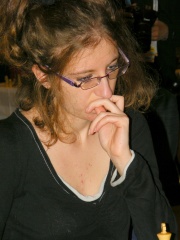
10. Marie Sebag (b. 1986)
With an HPI of 38.88, Marie Sebag is the 10th most famous French Chess Player. Her biography has been translated into 20 different languages.
Marie Rachel Sebag (born 15 October 1986) is a French chess grandmaster. She is a two-time French Women's Chess Champion.
People
Pantheon has 10 people classified as French chess players born between 1702 and 1990. Of these 10, 4 (40.00%) of them are still alive today. The most famous living French chess players include Maxime Vachier-Lagrave, Étienne Bacrot, and Laurent Fressinet. The most famous deceased French chess players include François-André Danican Philidor, Legall de Kermeur, and Pal Benko.
Living French Chess Players
Go to all RankingsMaxime Vachier-Lagrave
1990 - Present
HPI: 46.46
Étienne Bacrot
1983 - Present
HPI: 43.36
Laurent Fressinet
1981 - Present
HPI: 40.79
Marie Sebag
1986 - Present
HPI: 38.88
Deceased French Chess Players
Go to all RankingsFrançois-André Danican Philidor
1726 - 1795
HPI: 72.01
Legall de Kermeur
1702 - 1792
HPI: 62.44
Pal Benko
1928 - 2019
HPI: 60.30
André Chéron
1895 - 1980
HPI: 58.12
Pierre Charles Fournier de Saint-Amant
1800 - 1872
HPI: 56.80
Chantal Chaudé de Silans
1919 - 2001
HPI: 55.99
Overlapping Lives
Which Chess Players were alive at the same time? This visualization shows the lifespans of the 6 most globally memorable Chess Players since 1700.

